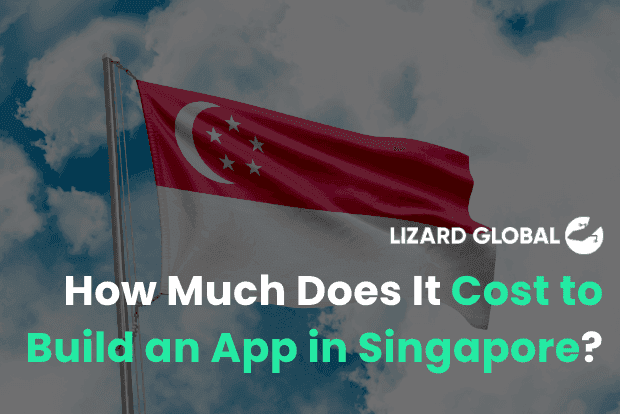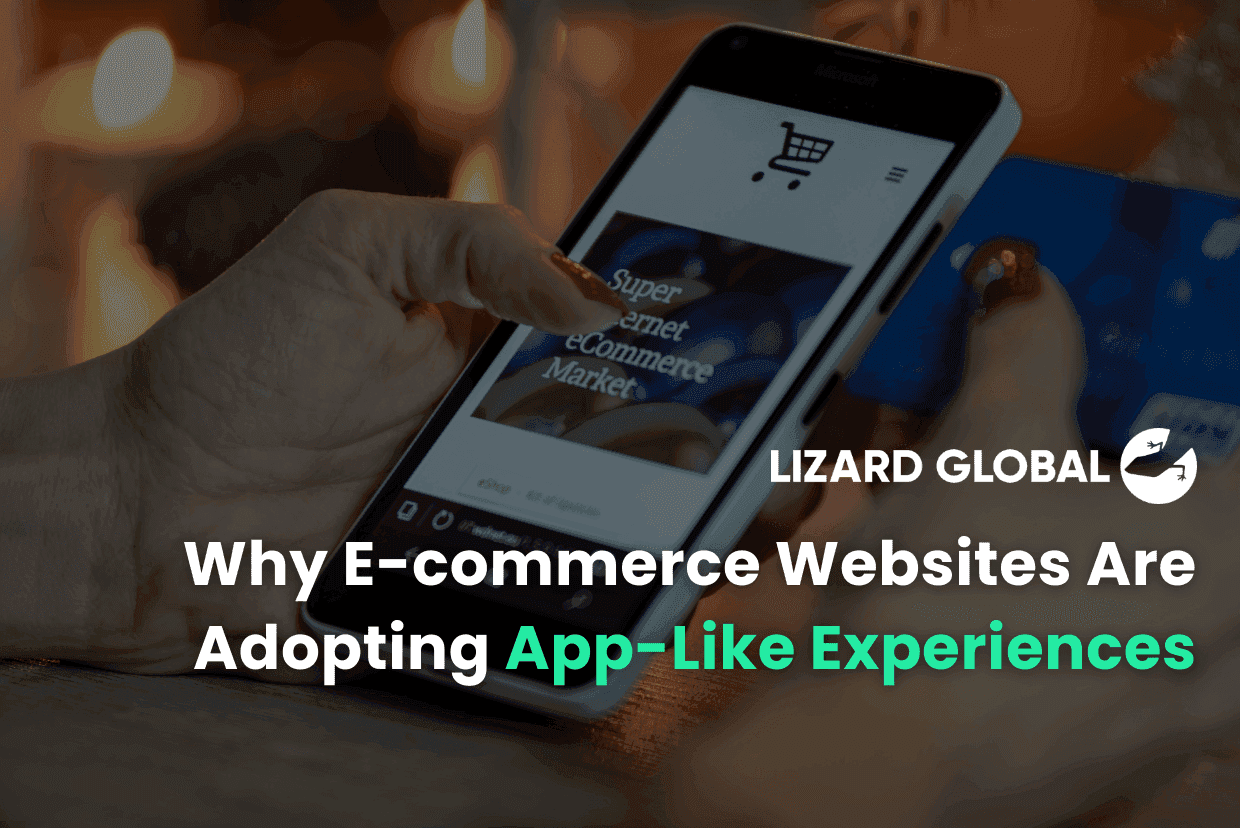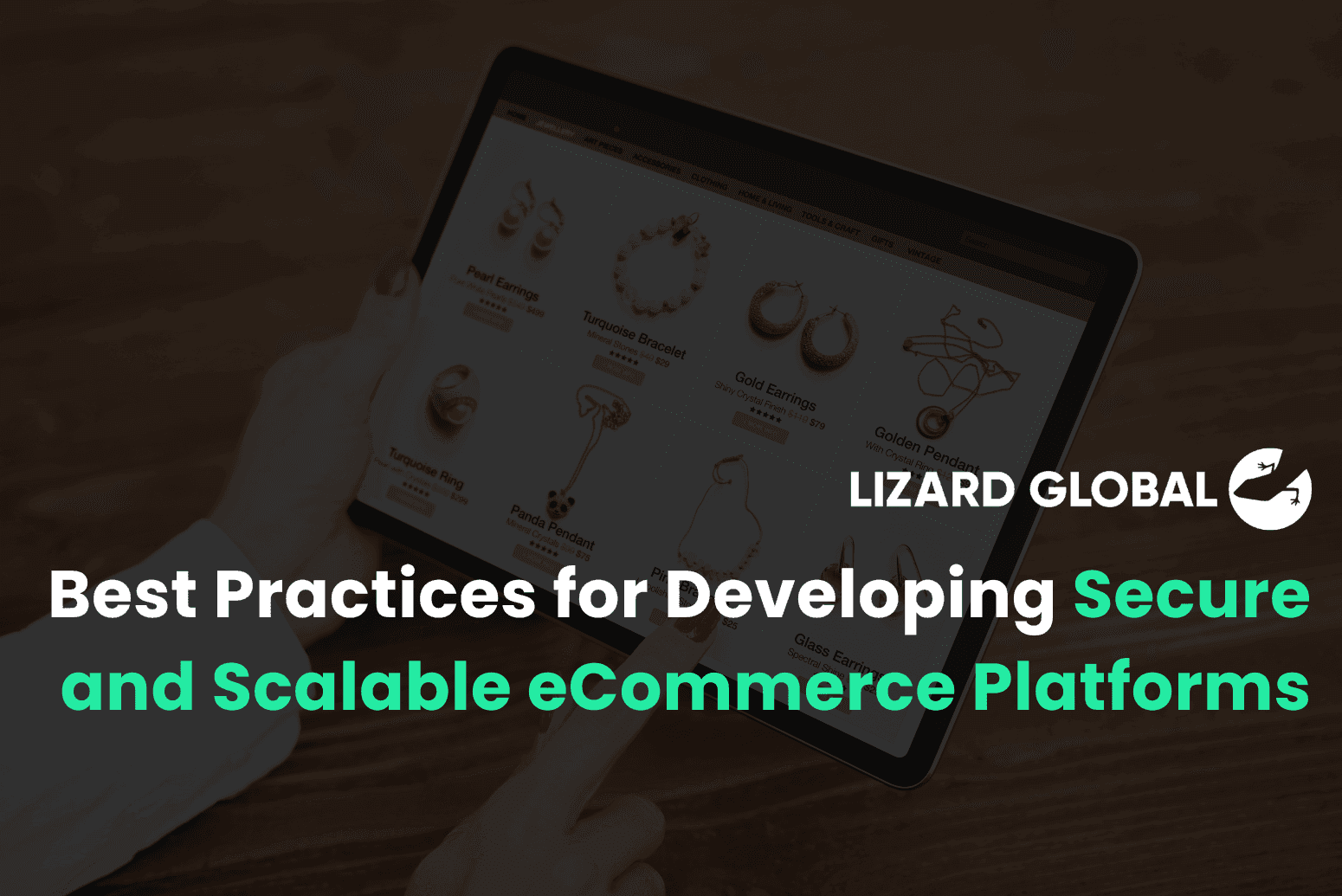UI/UX Design
Strategic Planning
+ 3 more ...
Key Considerations For Mobile App Conceptualization

12 Nov 2024
by Nadiy, Senior Content Writer

12 Nov 2024
by Nadiy, Senior Content Writer
UI/UX Design
Strategic Planning
Software Development
Data Privacy
App Features
Key Considerations For Mobile App Conceptualization
Table of contents
Contact us
We will get back to you in the next 48 hours.

Key Considerations For Mobile App Conceptualization
Curious about what it takes to turn a mobile app idea into a successful, user-friendly product? In this blog, we break down the key steps in mobile app conceptualization—from defining the target audience and prioritizing core features to optimizing for cross-platform functionality. Discover how strategic planning and the right development partner can transform your concept into a market-ready app that stands out and meets user needs. Whether you're a startup or an established business, these insights will guide you through the foundational elements of creating an app that attracts and retains users. Dive in to learn how to bring your mobile app vision to life!
key takeaways
Mobile apps have become essential tools for businesses across industries. With over 5 million apps competing in the App Store and Google Play, designing a mobile app that not only attracts users but keeps them engaged has become a strategic advantage. However, the journey from concept to launch is complex, requiring more than just a good idea; it demands a deep understanding of user needs, market trends, and the technological nuances of mobile platforms.
A well-conceptualized app not only addresses specific user pain points but also aligns with an organization's broader business goals, from increasing brand engagement to generating new revenue streams. This initial stage of mobile app conceptualization—determining the app’s purpose, functionality, and overall direction—is a crucial foundation upon which the app’s success is built. Without a comprehensive approach that considers core features, target audience, user experience, and scalability, even a seemingly promising idea can struggle to gain traction.
This blog will explore the key considerations that lay the groundwork for a successful app, offering examples and insights into each area. Whether you're a startup looking to disrupt the market or an established business aiming to enhance customer engagement, understanding these essential steps can help guide you from ideation to implementation. With the right considerations, you can avoid common pitfalls and create an app that not only meets user expectations but also stands out in a crowded market.
1. Identify the Purpose and Target Audience
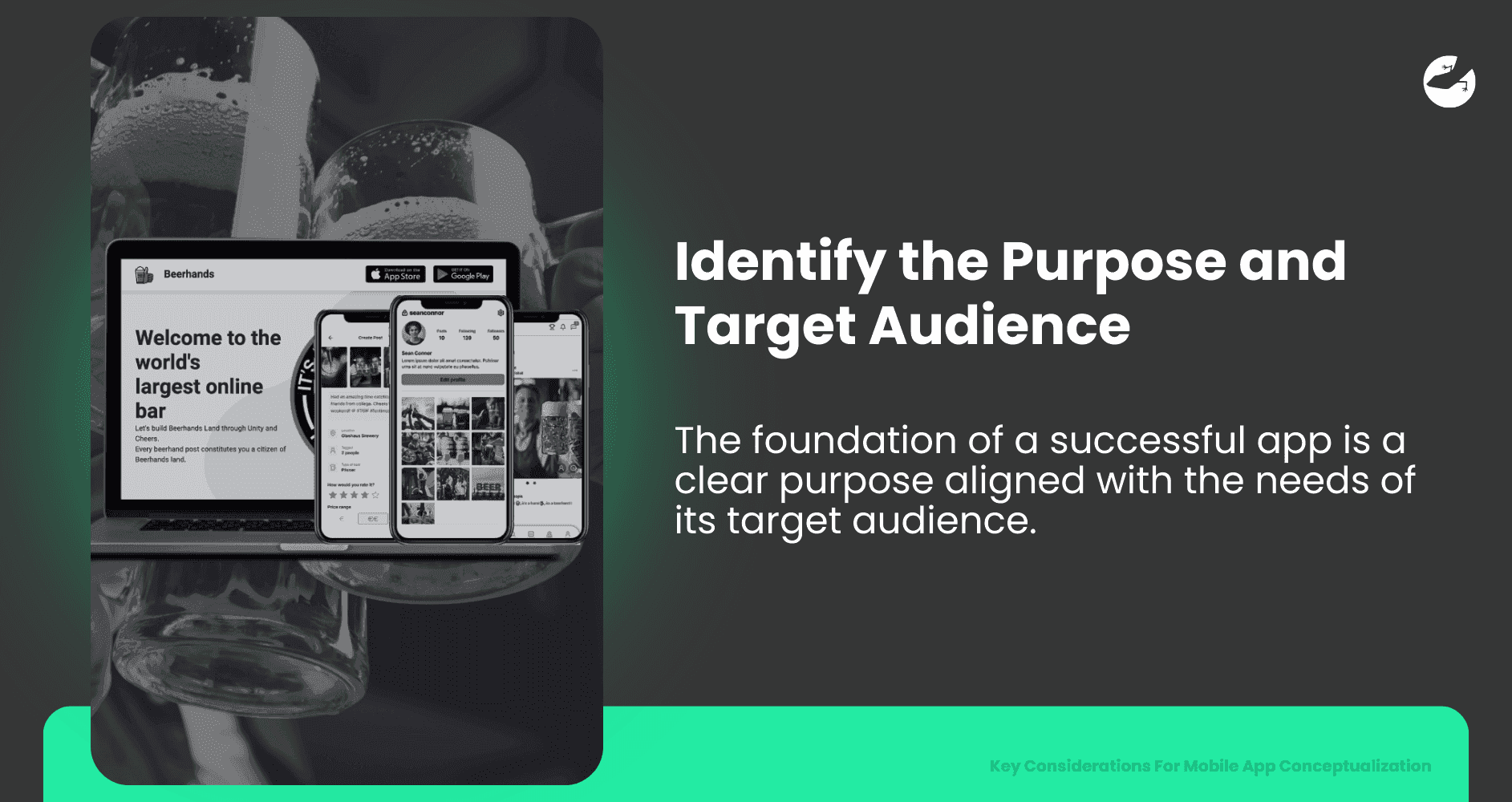
The foundation of a successful app is a clear purpose aligned with the needs of its target audience.
Example: The community app Beerhands aims to connect beer and technology enthusiasts around the globe in a single digital space for them to come together and share moments of joy associated with beer. To appeal to this audience, Beerhands offers features like photo sharing, following, chatting, and check-ins. This clear focus helps Beerhands stand out in the crowded community app market by addressing the specific needs of its users.
To apply this:
- Problem-Solving: Clearly identify the problem your app solves.
- Audience Segmentation: Create detailed personas of your ideal users to tailor the app experience, from language to color schemes.
- Value Proposition: Articulate what makes your app beneficial, helping your audience see the unique value your app brings to their lives.
2. Focus on Core Features and Simplicity
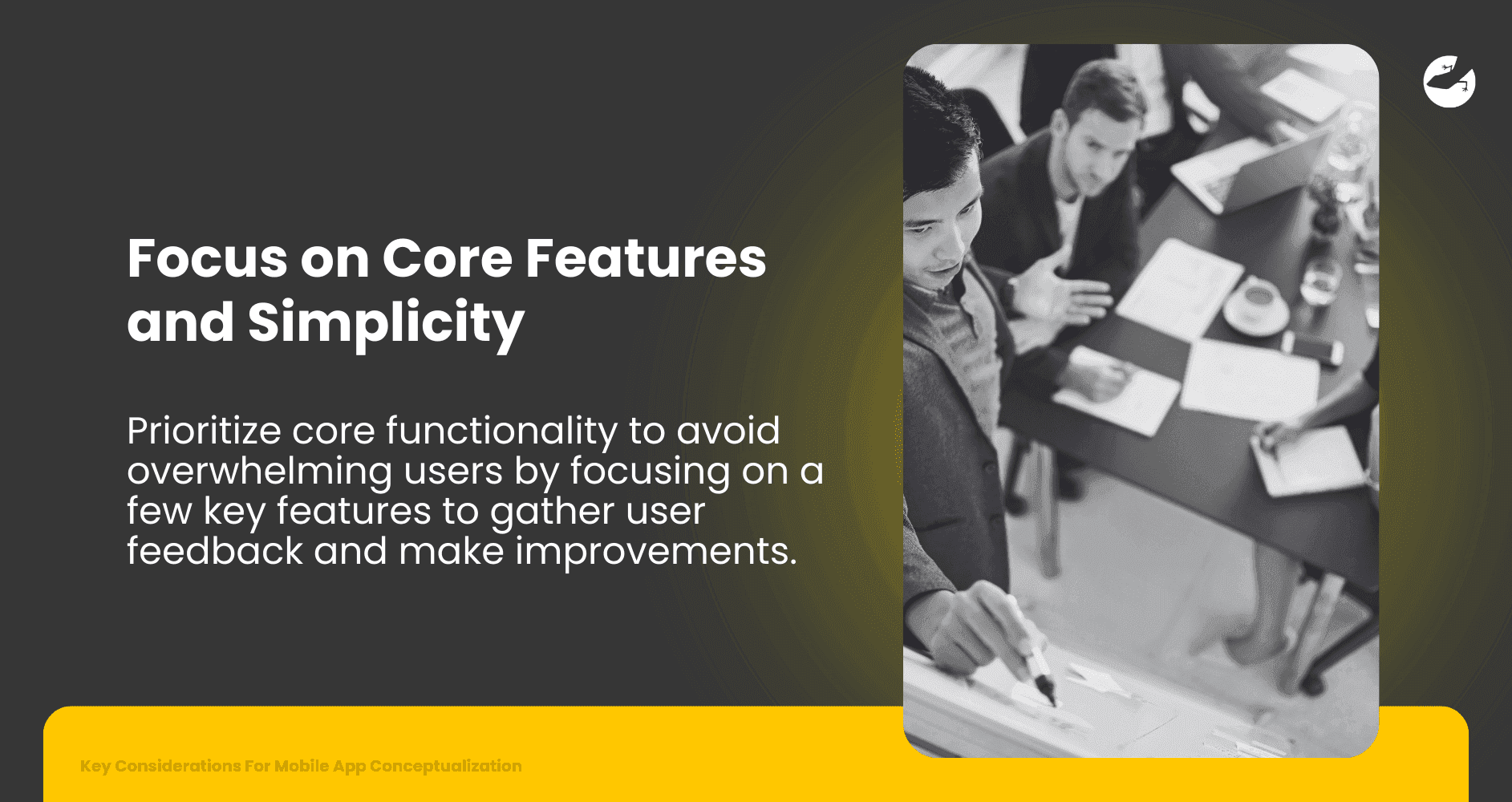
When starting, an app should prioritize core functionality to avoid overwhelming users. Focusing on a few key features allows the team to gather user feedback and make improvements before adding more complex functionalities.
Example: Instagram launched as a simple photo-sharing app with just a few basic filters. Initially, it avoided overwhelming users with additional features like direct messaging, video sharing, and shopping capabilities. As the app grew and user feedback highlighted evolving needs, Instagram introduced these features incrementally, allowing it to scale without compromising user experience.
To apply this:
- MVP Development: Identify the must-have features and focus on them for the initial launch.
- Feature Prioritization: Use methods like the MoSCoW (Must-have, Should-have, Could-have, Won’t-have) technique to identify and rank essential features.
- User Flow: Design clear pathways within the app to make navigation easy and intuitive.
3. Consider Cross-Platform Compatibility and Device Requirements
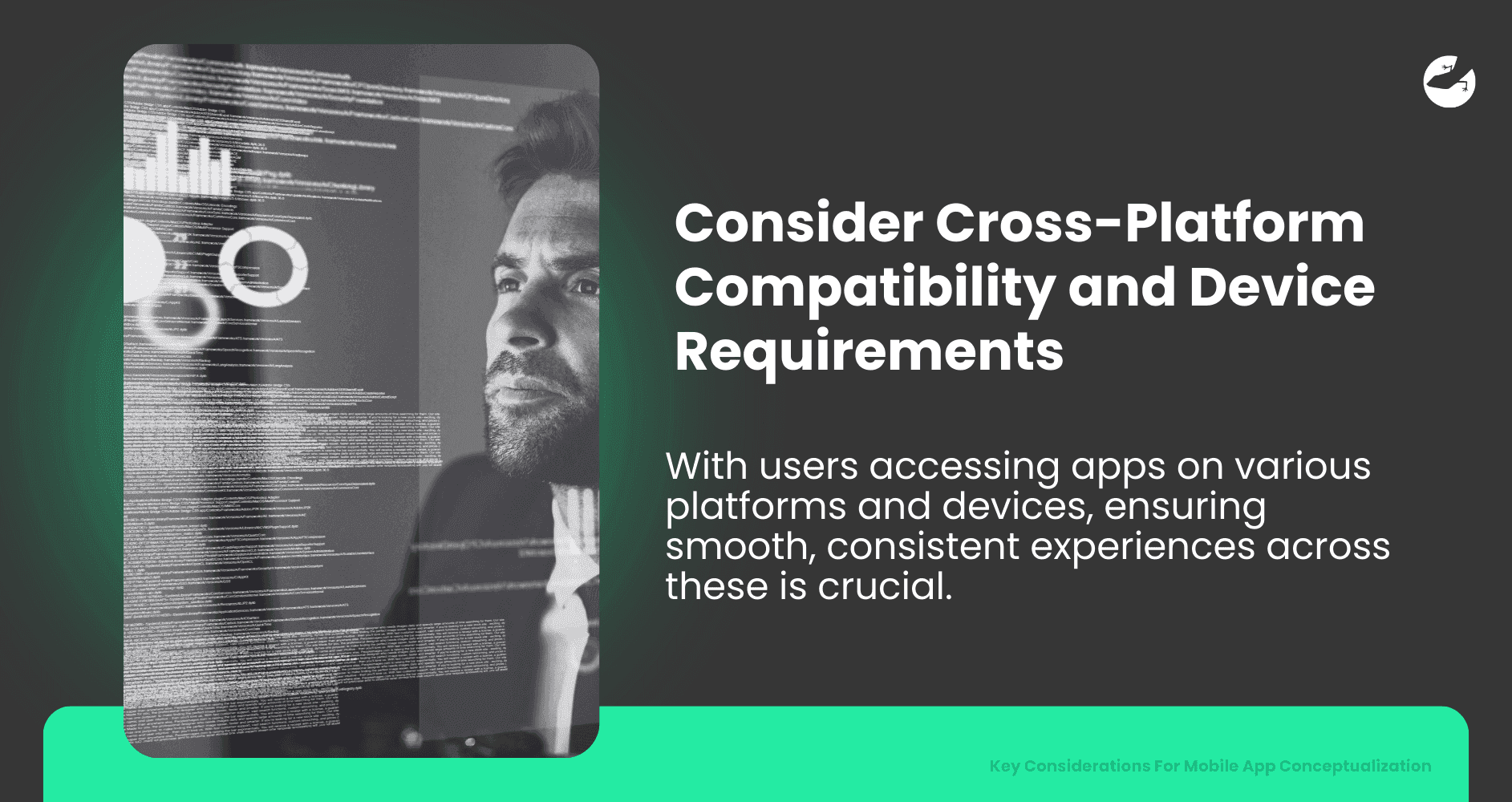
With users accessing apps on various platforms and devices, ensuring smooth, consistent experiences across these is crucial.
Example: Spotify uses React Native, a cross-platform development framework, to provide a seamless experience across Android, iOS, and desktops. This consistency allows users to enjoy the same design, features, and smooth transitions when switching devices, improving user satisfaction and retention.
To apply this:
- Cross-Platform Frameworks: Choose tools like Flutter or React Native to create unified experiences across platforms.
- Device-Specific Adaptations: Optimize for each platform’s UI conventions, ensuring Android and iOS users feel the app was built with them in mind.
- Performance Optimization: Test the app on various devices, including lower-end models, to avoid performance issues that may alienate users with budget devices.
4. Prioritize User Experience (UX) and User Interface (UI) Design
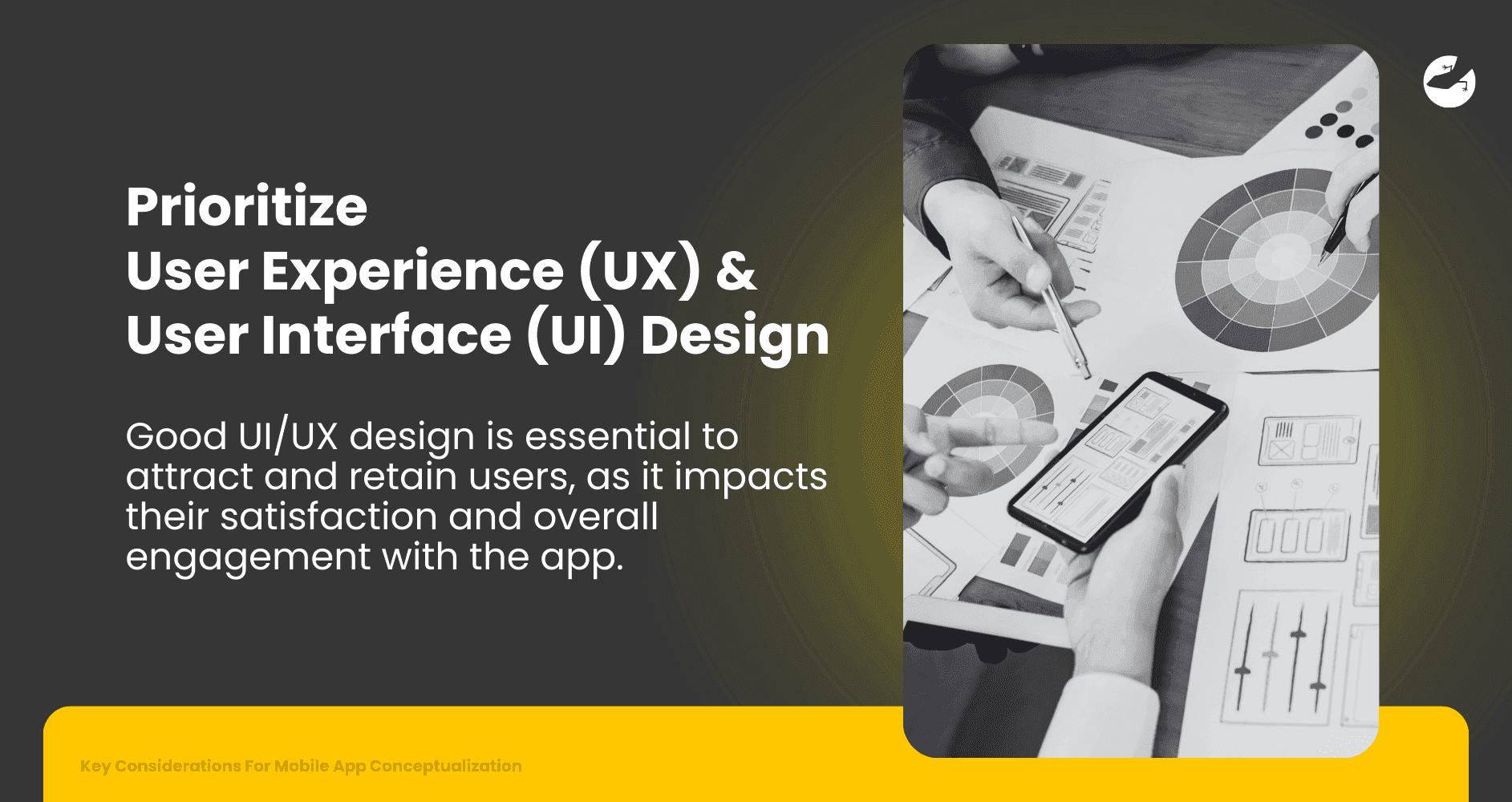
Good UI/UX design is essential to attract and retain users, as it impacts their satisfaction and overall engagement with the app.
Example: Duolingo has a highly engaging UI, designed to make learning a language fun and gamified. The app’s user-friendly, colorful interface encourages users to complete lessons daily, while elements like leaderboards and rewards keep them engaged.
To apply this:
- Intuitive Navigation: Use simple navigation structures, like tab bars, to make the app easy to explore.
- Visual Consistency: Maintain a consistent look and feel across the app by using the same colors, typography, and icons. This reinforces brand identity and usability.
- Accessibility: Make the app inclusive by adding features like high-contrast colors, voiceover compatibility, and adjustable text sizes.
5. Plan Monetization Strategy
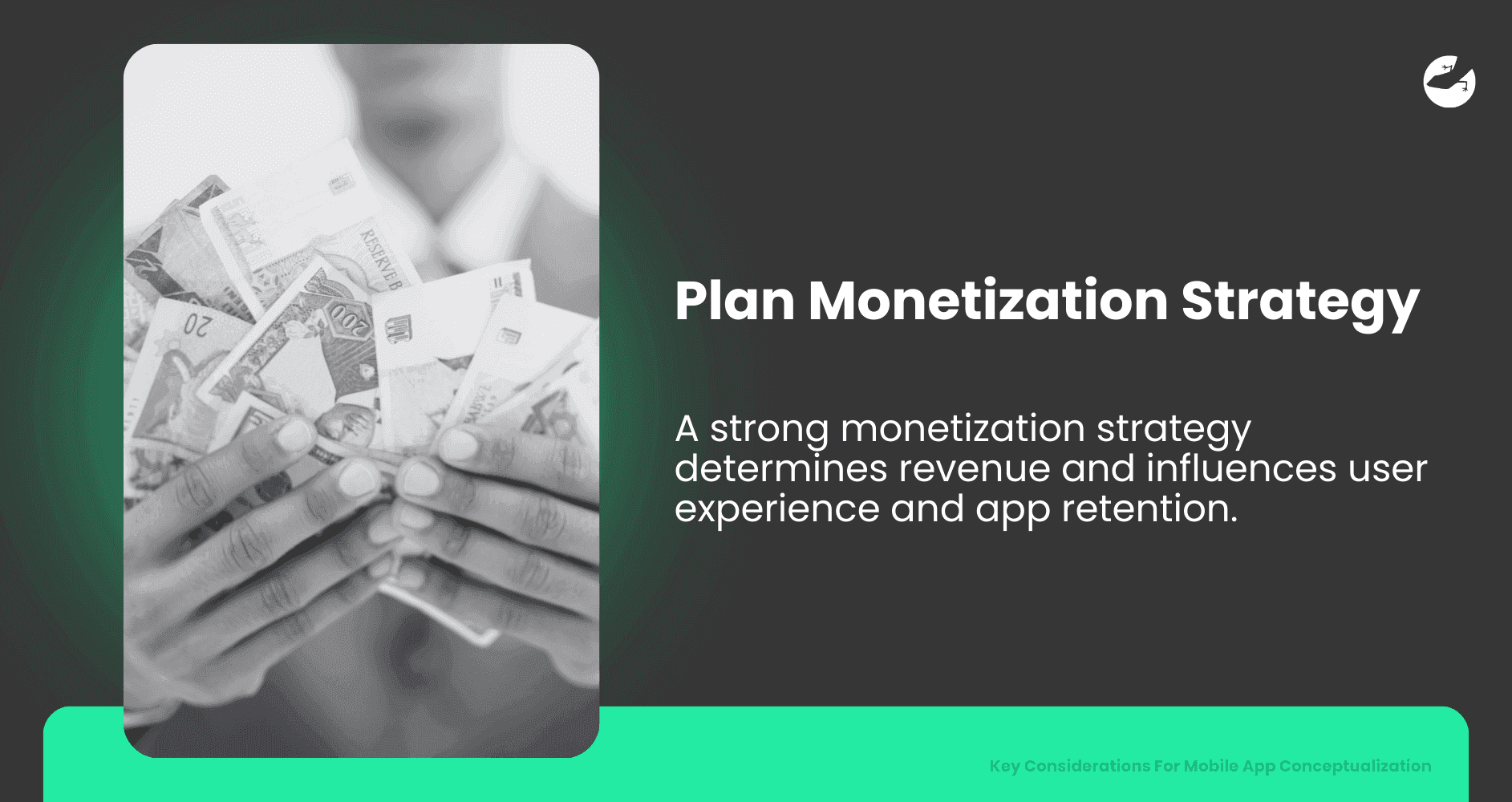
A strong monetization strategy not only determines revenue but also influences user experience and app retention.
Example: Headspace, another meditation app, uses a freemium model, offering free sessions with the option to upgrade for access to its full library. This allows new users to explore the app without commitment while encouraging them to upgrade once they see the app's value.
To apply this:
- Freemium Model: Offer basic functionality for free to attract users, then charge for premium features.
- In-App Advertising: If using ads, ensure they’re not intrusive. Banner ads or optional video ads (reward-based) can be less disruptive than pop-ups.
- Subscription or In-App Purchases: For content-driven apps, offering subscriptions can create a sustainable revenue stream.
6. Implement Security and Data Privacy Measures
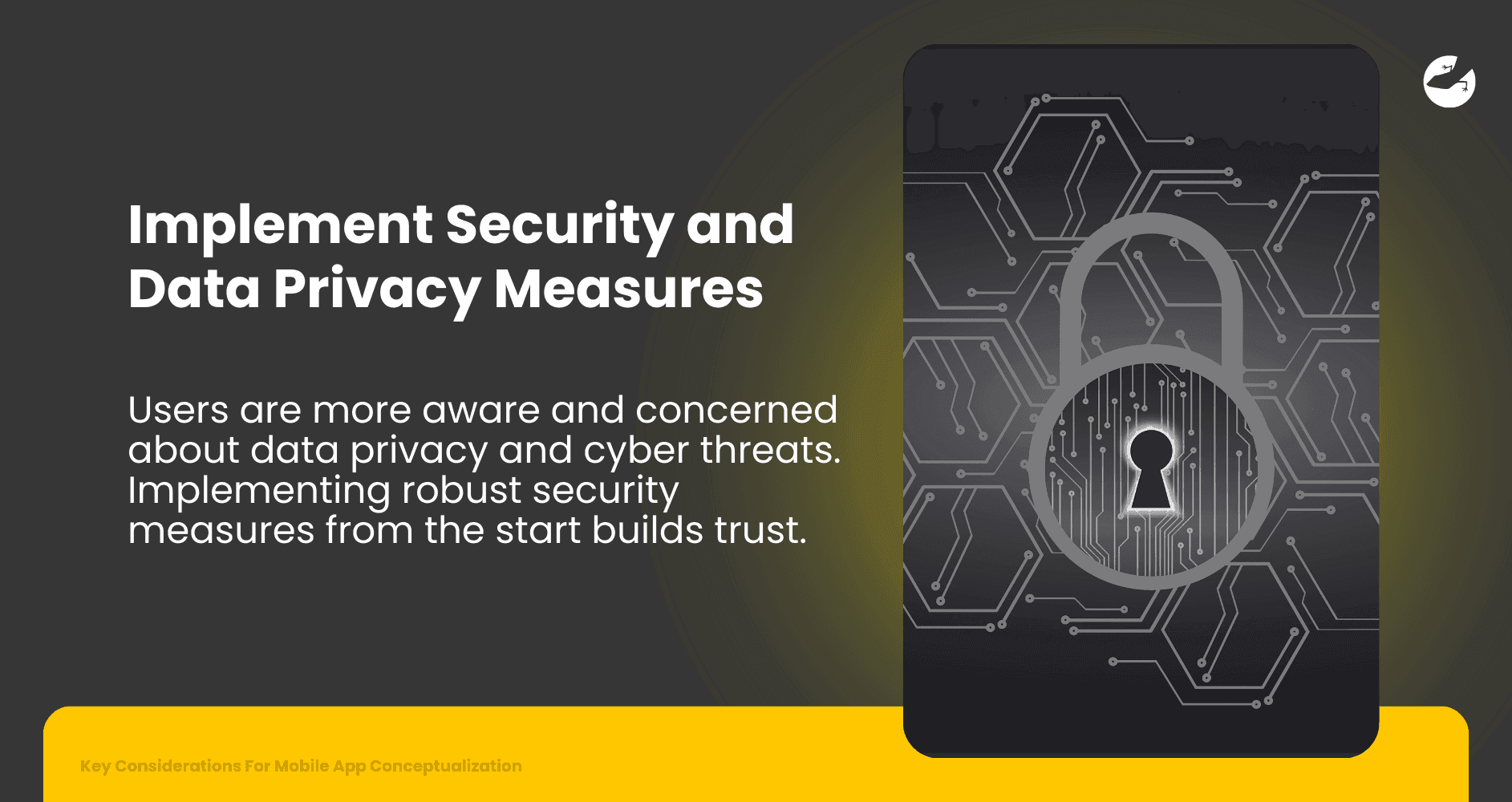
With the rise of cyber threats, users are more aware and concerned about data privacy. Implementing robust security measures from the start builds trust.
Example: Signal, a messaging app focused on privacy, encrypts messages end-to-end, ensuring no one but the intended recipient can access them. Signal’s transparency about data practices has helped it gain trust and popularity among privacy-conscious users.
To apply this:
- Data Encryption: Encrypt user data to ensure it remains private and secure.
- Privacy by Design: Only collect essential data and be transparent about its usage.
- Compliance: Ensure your app adheres to relevant data regulations (like GDPR in Europe, CCPA in California or PDPA in Malaysia), as failure to comply can lead to hefty fines and damage your reputation.
7. Integrate Analytics and Testing for Continuous Improvement
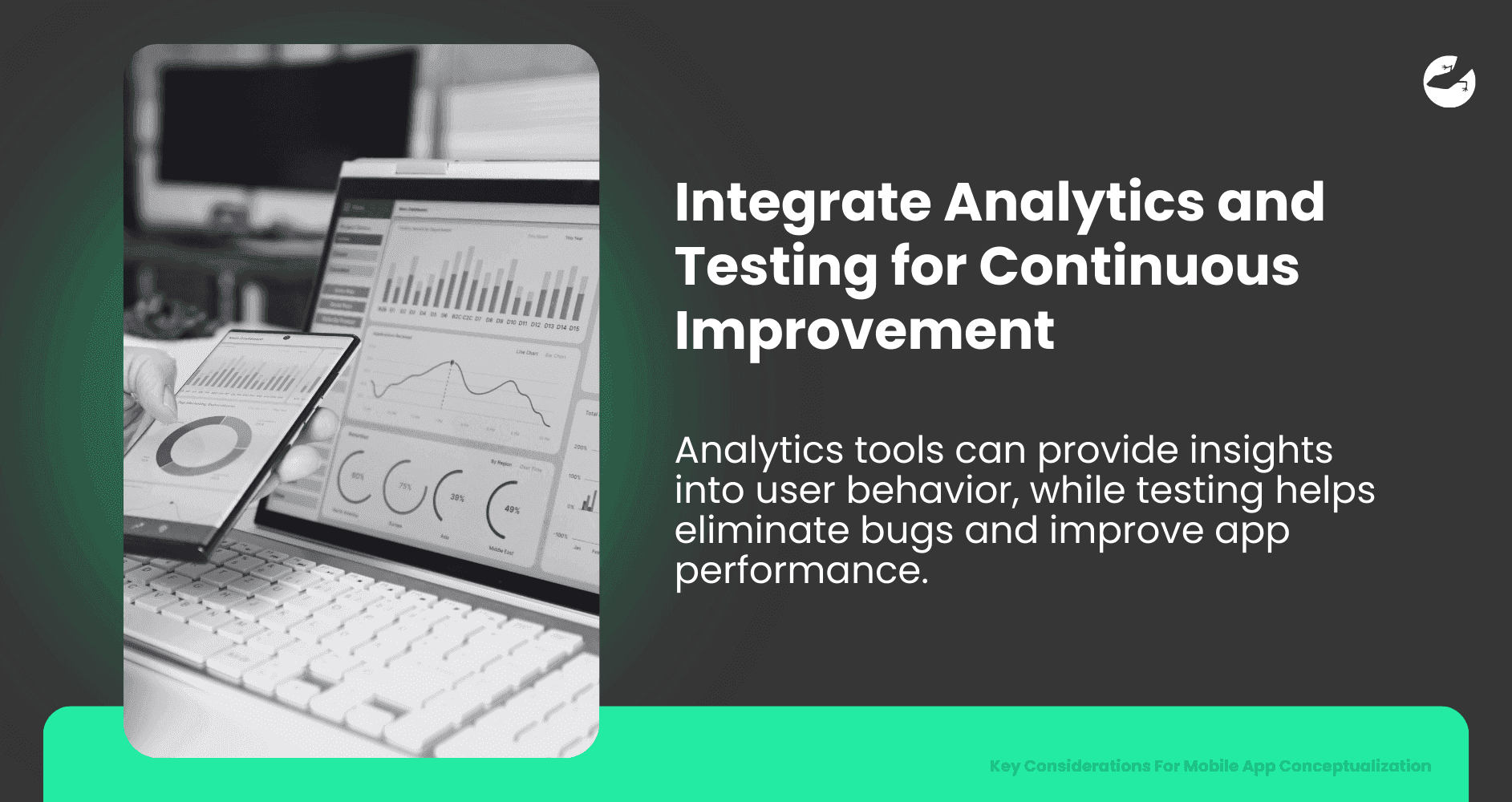
Analytics tools
can provide insights into user behavior, while testing helps eliminate bugs and improve app performance.
Example: Netflix uses A/B testing extensively to fine-tune its features, from thumbnail images to content suggestions, constantly improving the user experience based on data-driven insights.
To apply this:
- User Behavior Analytics: Use tools like Firebase Analytics or Amplitude to gain insights into user engagement, drop-off points, and retention rates.
- A/B Testing: Experiment with different variations of features or UI elements to see which performs better.
- Beta Testing: Involve real users in beta testing to catch issues before full-scale deployment. Platforms like TestFlight (iOS) and Google Play Beta (Android) make this easier.
8. Emphasize Scalability for Future Growth
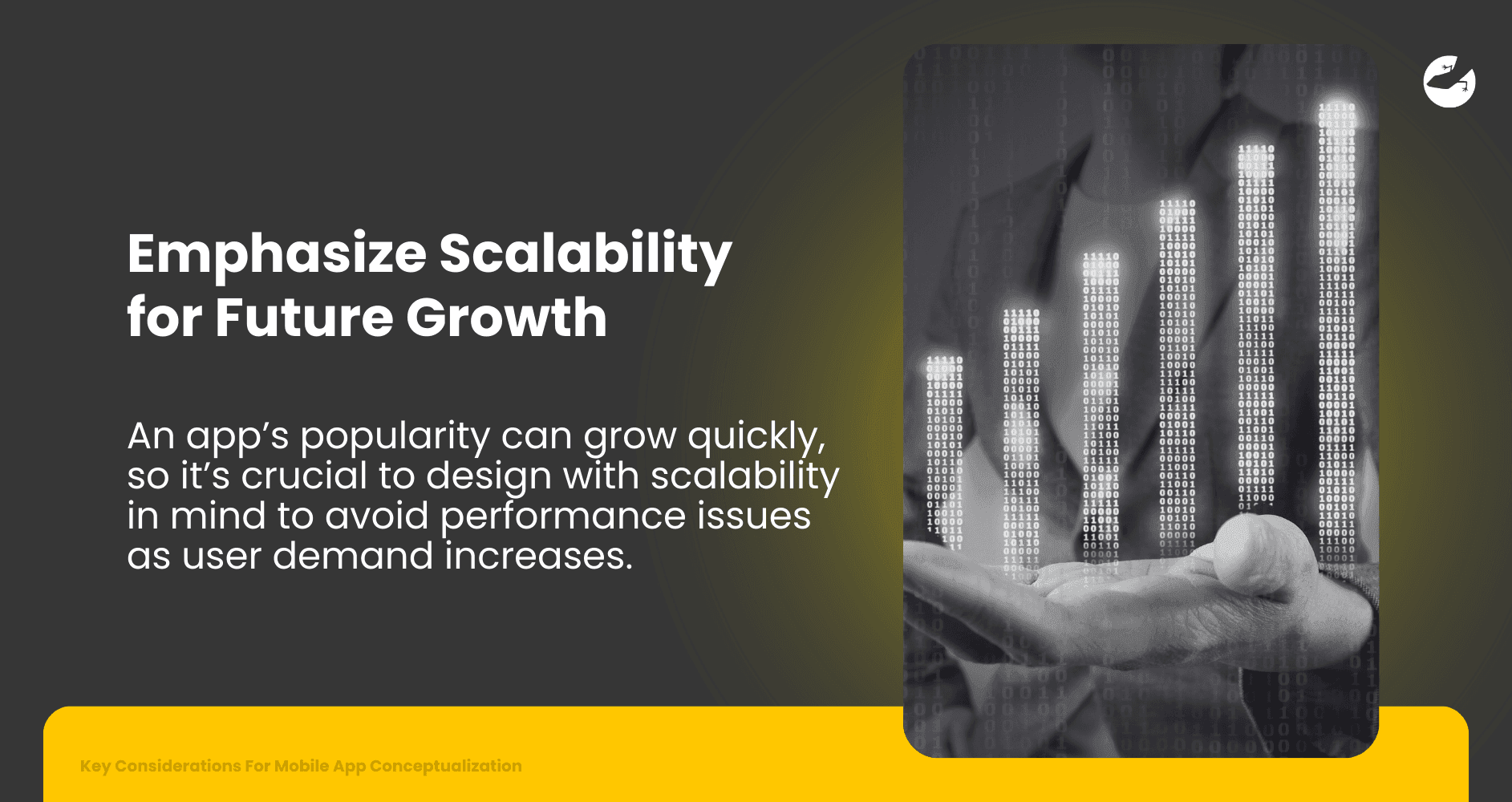
An app’s popularity can grow quickly, so it’s crucial to design with scalability in mind to avoid performance issues as user demand increases.
Example: Uber anticipated rapid growth and built its backend to handle high volumes of data and user requests. Using a cloud-based infrastructure allowed Uber to quickly scale up or down based on demand, ensuring the app performed smoothly even during peak times.
To apply this:
- Backend Scalability: Opt for cloud-based infrastructures like AWS or Google Cloud to handle fluctuations in traffic.
- Modular Architecture: Use modular components that allow easy upgrades, ensuring scalability without requiring a complete overhaul.
- Caching and Load Balancing: Implement caching and load-balancing techniques to optimize performance and manage traffic efficiently.
9. Develop a Comprehensive Marketing and Launch Strategy
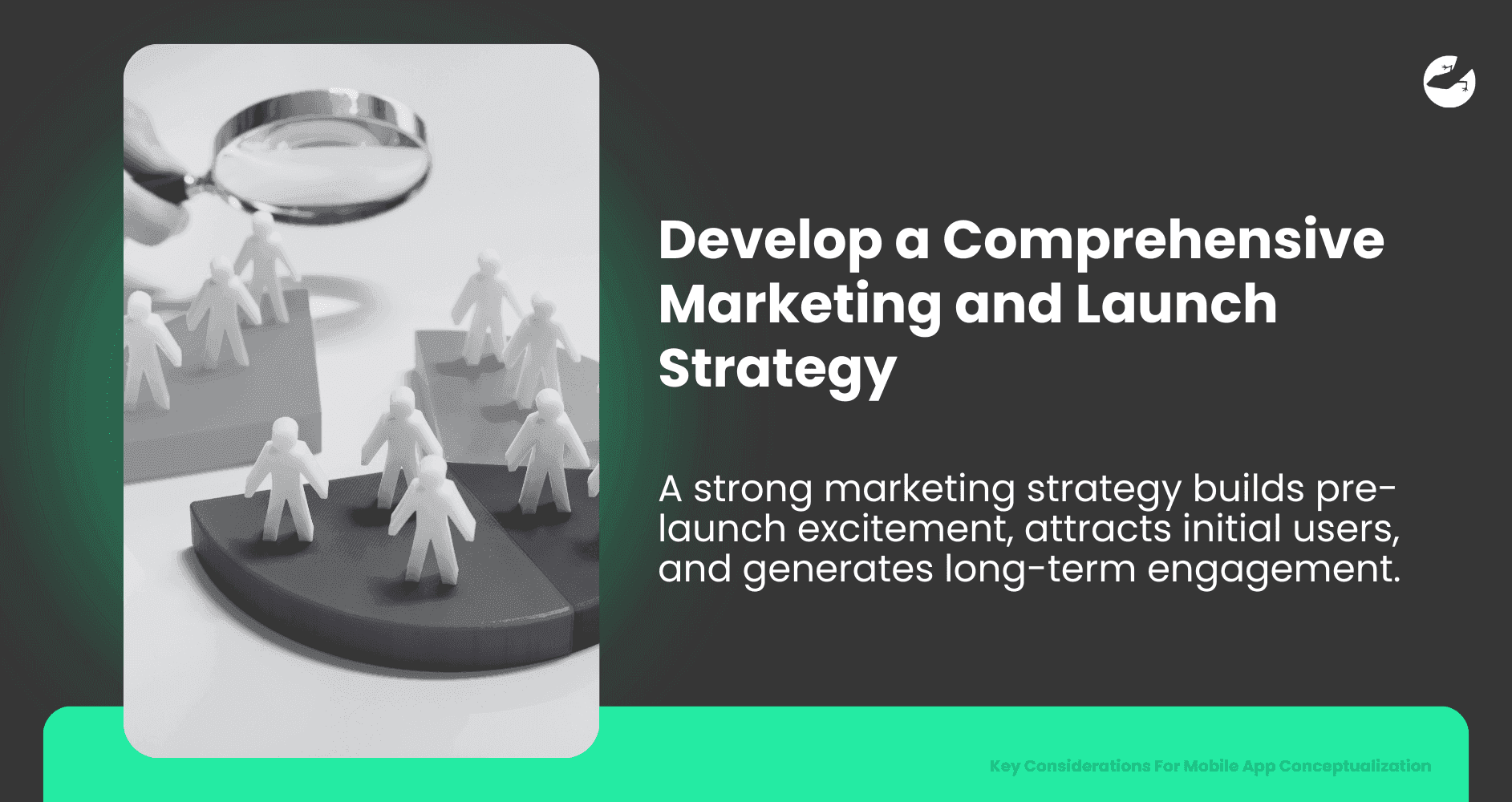
Without effective marketing, even the most well-developed app may struggle to gain traction. A strong marketing strategy builds pre-launch excitement, attracts initial users, and generates long-term engagement.
Example: Clubhouse, the invite-only social media app, generated massive pre-launch hype by creating exclusivity around invites. Its marketing strategy, driven by word-of-mouth and influencer engagement, attracted a large user base in a short time.
To apply this:
- App Store Optimization (ASO): Use keyword-rich descriptions, engaging screenshots, and attention-grabbing titles to make your app easy to find.
- Social Media Marketing: Engage with potential users through social media to create awareness before the launch. Consider influencer partnerships for added reach.
- Beta User Engagement: Encourage beta users to leave reviews and share the app on social media to build credibility and attract new users.
Bring Your App To Life With Lizard Global
Conceptualizing a mobile app
is a process that requires strategic thought, technical insight, and a user-centric approach. From clearly identifying your app's purpose to ensuring scalability, each step plays an integral role in creating an app that resonates with users and achieves long-term business goals. However, the technical and creative demands involved in building a functional and engaging app are often daunting, particularly for businesses focused on delivering value in other domains.

A software development company, like Lizard Global can be an invaluable partner in this journey, providing expert guidance through every stage of the app’s life cycle. From initial ideation to final deployment, our experienced development team brings specialized skills in UX/UI design, cross-platform compatibility, data privacy, and backend scalability. We also help with the critical phases of market analysis, audience targeting, and monetization strategy, ensuring the app is aligned with both user needs and business objectives.
Additionally, we offer ongoing support and scalability solutions to accommodate user growth and evolving market demands. Their expertise in areas like growth analytics and beta testing enables continuous improvement, allowing your app to adapt and grow in response to user feedback. Working with us not only streamlines the technical aspects of app creation but also provides strategic insights that can transform an initial concept into a valuable digital asset. Reach out today to start your journey of creating the next best app!
Join 2000+ subscribers
Stay in the loop with everything you need to know

Key Considerations For Mobile App Conceptualization
Curious about what it takes to turn a mobile app idea into a successful, user-friendly product? In this blog, we break down the key steps in mobile app conceptualization—from defining the target audience and prioritizing core features to optimizing for cross-platform functionality. Discover how strategic planning and the right development partner can transform your concept into a market-ready app that stands out and meets user needs. Whether you're a startup or an established business, these insights will guide you through the foundational elements of creating an app that attracts and retains users. Dive in to learn how to bring your mobile app vision to life!
Mobile apps have become essential tools for businesses across industries. With over 5 million apps competing in the App Store and Google Play, designing a mobile app that not only attracts users but keeps them engaged has become a strategic advantage. However, the journey from concept to launch is complex, requiring more than just a good idea; it demands a deep understanding of user needs, market trends, and the technological nuances of mobile platforms.
A well-conceptualized app not only addresses specific user pain points but also aligns with an organization's broader business goals, from increasing brand engagement to generating new revenue streams. This initial stage of mobile app conceptualization—determining the app’s purpose, functionality, and overall direction—is a crucial foundation upon which the app’s success is built. Without a comprehensive approach that considers core features, target audience, user experience, and scalability, even a seemingly promising idea can struggle to gain traction.
This blog will explore the key considerations that lay the groundwork for a successful app, offering examples and insights into each area. Whether you're a startup looking to disrupt the market or an established business aiming to enhance customer engagement, understanding these essential steps can help guide you from ideation to implementation. With the right considerations, you can avoid common pitfalls and create an app that not only meets user expectations but also stands out in a crowded market.
1. Identify the Purpose and Target Audience

The foundation of a successful app is a clear purpose aligned with the needs of its target audience.
Example: The community app Beerhands aims to connect beer and technology enthusiasts around the globe in a single digital space for them to come together and share moments of joy associated with beer. To appeal to this audience, Beerhands offers features like photo sharing, following, chatting, and check-ins. This clear focus helps Beerhands stand out in the crowded community app market by addressing the specific needs of its users.
To apply this:
- Problem-Solving: Clearly identify the problem your app solves.
- Audience Segmentation: Create detailed personas of your ideal users to tailor the app experience, from language to color schemes.
- Value Proposition: Articulate what makes your app beneficial, helping your audience see the unique value your app brings to their lives.
2. Focus on Core Features and Simplicity

When starting, an app should prioritize core functionality to avoid overwhelming users. Focusing on a few key features allows the team to gather user feedback and make improvements before adding more complex functionalities.
Example: Instagram launched as a simple photo-sharing app with just a few basic filters. Initially, it avoided overwhelming users with additional features like direct messaging, video sharing, and shopping capabilities. As the app grew and user feedback highlighted evolving needs, Instagram introduced these features incrementally, allowing it to scale without compromising user experience.
To apply this:
- MVP Development: Identify the must-have features and focus on them for the initial launch.
- Feature Prioritization: Use methods like the MoSCoW (Must-have, Should-have, Could-have, Won’t-have) technique to identify and rank essential features.
- User Flow: Design clear pathways within the app to make navigation easy and intuitive.
3. Consider Cross-Platform Compatibility and Device Requirements

With users accessing apps on various platforms and devices, ensuring smooth, consistent experiences across these is crucial.
Example: Spotify uses React Native, a cross-platform development framework, to provide a seamless experience across Android, iOS, and desktops. This consistency allows users to enjoy the same design, features, and smooth transitions when switching devices, improving user satisfaction and retention.
To apply this:
- Cross-Platform Frameworks: Choose tools like Flutter or React Native to create unified experiences across platforms.
- Device-Specific Adaptations: Optimize for each platform’s UI conventions, ensuring Android and iOS users feel the app was built with them in mind.
- Performance Optimization: Test the app on various devices, including lower-end models, to avoid performance issues that may alienate users with budget devices.
4. Prioritize User Experience (UX) and User Interface (UI) Design

Good UI/UX design is essential to attract and retain users, as it impacts their satisfaction and overall engagement with the app.
Example: Duolingo has a highly engaging UI, designed to make learning a language fun and gamified. The app’s user-friendly, colorful interface encourages users to complete lessons daily, while elements like leaderboards and rewards keep them engaged.
To apply this:
- Intuitive Navigation: Use simple navigation structures, like tab bars, to make the app easy to explore.
- Visual Consistency: Maintain a consistent look and feel across the app by using the same colors, typography, and icons. This reinforces brand identity and usability.
- Accessibility: Make the app inclusive by adding features like high-contrast colors, voiceover compatibility, and adjustable text sizes.
5. Plan Monetization Strategy

A strong monetization strategy not only determines revenue but also influences user experience and app retention.
Example: Headspace, another meditation app, uses a freemium model, offering free sessions with the option to upgrade for access to its full library. This allows new users to explore the app without commitment while encouraging them to upgrade once they see the app's value.
To apply this:
- Freemium Model: Offer basic functionality for free to attract users, then charge for premium features.
- In-App Advertising: If using ads, ensure they’re not intrusive. Banner ads or optional video ads (reward-based) can be less disruptive than pop-ups.
- Subscription or In-App Purchases: For content-driven apps, offering subscriptions can create a sustainable revenue stream.
6. Implement Security and Data Privacy Measures

With the rise of cyber threats, users are more aware and concerned about data privacy. Implementing robust security measures from the start builds trust.
Example: Signal, a messaging app focused on privacy, encrypts messages end-to-end, ensuring no one but the intended recipient can access them. Signal’s transparency about data practices has helped it gain trust and popularity among privacy-conscious users.
To apply this:
- Data Encryption: Encrypt user data to ensure it remains private and secure.
- Privacy by Design: Only collect essential data and be transparent about its usage.
- Compliance: Ensure your app adheres to relevant data regulations (like GDPR in Europe, CCPA in California or PDPA in Malaysia), as failure to comply can lead to hefty fines and damage your reputation.
7. Integrate Analytics and Testing for Continuous Improvement

Analytics tools
can provide insights into user behavior, while testing helps eliminate bugs and improve app performance.
Example: Netflix uses A/B testing extensively to fine-tune its features, from thumbnail images to content suggestions, constantly improving the user experience based on data-driven insights.
To apply this:
- User Behavior Analytics: Use tools like Firebase Analytics or Amplitude to gain insights into user engagement, drop-off points, and retention rates.
- A/B Testing: Experiment with different variations of features or UI elements to see which performs better.
- Beta Testing: Involve real users in beta testing to catch issues before full-scale deployment. Platforms like TestFlight (iOS) and Google Play Beta (Android) make this easier.
8. Emphasize Scalability for Future Growth

An app’s popularity can grow quickly, so it’s crucial to design with scalability in mind to avoid performance issues as user demand increases.
Example: Uber anticipated rapid growth and built its backend to handle high volumes of data and user requests. Using a cloud-based infrastructure allowed Uber to quickly scale up or down based on demand, ensuring the app performed smoothly even during peak times.
To apply this:
- Backend Scalability: Opt for cloud-based infrastructures like AWS or Google Cloud to handle fluctuations in traffic.
- Modular Architecture: Use modular components that allow easy upgrades, ensuring scalability without requiring a complete overhaul.
- Caching and Load Balancing: Implement caching and load-balancing techniques to optimize performance and manage traffic efficiently.
9. Develop a Comprehensive Marketing and Launch Strategy

Without effective marketing, even the most well-developed app may struggle to gain traction. A strong marketing strategy builds pre-launch excitement, attracts initial users, and generates long-term engagement.
Example: Clubhouse, the invite-only social media app, generated massive pre-launch hype by creating exclusivity around invites. Its marketing strategy, driven by word-of-mouth and influencer engagement, attracted a large user base in a short time.
To apply this:
- App Store Optimization (ASO): Use keyword-rich descriptions, engaging screenshots, and attention-grabbing titles to make your app easy to find.
- Social Media Marketing: Engage with potential users through social media to create awareness before the launch. Consider influencer partnerships for added reach.
- Beta User Engagement: Encourage beta users to leave reviews and share the app on social media to build credibility and attract new users.
Bring Your App To Life With Lizard Global
Conceptualizing a mobile app
is a process that requires strategic thought, technical insight, and a user-centric approach. From clearly identifying your app's purpose to ensuring scalability, each step plays an integral role in creating an app that resonates with users and achieves long-term business goals. However, the technical and creative demands involved in building a functional and engaging app are often daunting, particularly for businesses focused on delivering value in other domains.

A software development company, like Lizard Global can be an invaluable partner in this journey, providing expert guidance through every stage of the app’s life cycle. From initial ideation to final deployment, our experienced development team brings specialized skills in UX/UI design, cross-platform compatibility, data privacy, and backend scalability. We also help with the critical phases of market analysis, audience targeting, and monetization strategy, ensuring the app is aligned with both user needs and business objectives.
Additionally, we offer ongoing support and scalability solutions to accommodate user growth and evolving market demands. Their expertise in areas like growth analytics and beta testing enables continuous improvement, allowing your app to adapt and grow in response to user feedback. Working with us not only streamlines the technical aspects of app creation but also provides strategic insights that can transform an initial concept into a valuable digital asset. Reach out today to start your journey of creating the next best app!
Join 2000+ subscribers
Stay in the loop with everything you need to know
FAQs

What are the key steps in mobile app conceptualization?
How do I decide which features to include in an MVP?
Why is cross-platform compatibility important for a mobile app?
What are the best ways to ensure data privacy in a mobile app?
How can a software development company help with app development?
similar reads

